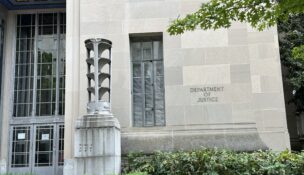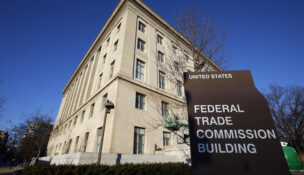Identification Case Analysis
By: dmc-admin//February 8, 2006//
The decision fails to provide much guidance, either for cases pending now in which the defendant seeks to present expert testimony, or for older cases in which decisions not to admit evidence attacking eyewitness identifications are being reviewed.
The court certainly suggests that expert testimony should always be admissible now. The court repeatedly uses the phrase, “in 2002,” to suggest that a similar decision today would not be a proper exercise of discretion.
The court wrote, “Were this case to come before the circuit court today, given the developments that have occurred in the interim, it is highly likely that the judge would have allowed the expert to testify on factors that influence identification and memory.”
The statement could be construed as saying that, if the case occurred today, “the judge should allow the expert to testify on factors that influence identification and memory.”
Nevertheless, the court refused to adopt a presumption of admissibility for expert testimony in cases involving eyewitness identification.
The only explicit guidance lower courts get is “encourage[ment]” to “carefully consider, in each case, whether the admissibility of eyewitness expert testimony would be helpful to the trier of fact.”
As for newer cases, defendants may or may not be able to distinguish this case based on interim developments. As noted, the court repeatedly noted that it was reviewing an exercise of discretion “in 2002.”
Since then, the court has decided State v. Dubose, 2005 WI 126, 699 N.W.2d 581, in which the court found eyewitness identifications are suspect; last year, the State passed the Criminal Justice Reform Act, pursuant to legislative findings that identifications were unreliable.
Of course, awareness did not begin with the Dubose decision or the Act. Awareness of problems with identifications began well before. An important, but unanswered, question is, at what point between 2002 and 2005 should a circuit court have recognized that evidence such as that offered in this case should be admitted.
The more recent the trial, the stronger the argument is that it was an erroneous exercise of discretion to deny admission of the testimony.
However, in many cases, the strongest argument for distinguishing the case at bar may be the right to present a defense argument — that the testimony was “necessary” to their case under State v. St. George, 2002 WI 50, 252 Wis.2d 499, 643 N.W.2d 777.
Long before eyewitness identification became a hot topic, defense attorneys employed the methods of cross-examination that Shomberg’s attorney did, to suggest to juries that identifications are unreliable.
Whenever a witness was shown a lineup or a photo array, a good defense attorney would attempt to analogize that procedure to a multiple-choice (or “multiple guess”) test from grade school.
The attorney suggests that, just as a student might eliminate three out of five answers from a multiple-choice test right off the bat, because they aren’t even close to the right answer, and then guesses between the remaining two, the witness eliminated all but one of the persons in the lineup because they weren’t even close to matching the suspect’s description.
What may distinguish the case at bar from other cases is the defense attorney’s success — the witness freely acknowledged that that was exactly what she did. She acknowledged she eliminated three of six as too large, and two of six as too old, leaving only Shomberg.
| |
||
|
Related Links Related Article |
||
| |
||
Defense counsel asked, “he was the only one left after you eliminated the other five people?” and the victim answered, “That’s right.”
In other cases, witnesses may do the exact same thing, but might adamantly deny it, asserting they selected the defendant only because he was, in fact, the assailant. In those cases, a strong argument can be made that expert testimony is necessary.
In addition, the officer acknowledged that he had had training in which the reliability of simultaneous lineups was questioned, and that he was scheduled to receive training from the police department in conducting sequential lineups.
In other cases, the police officer may deny any familiarity with studies questioning the reliability of. Again, in those cases, the argument that a defense expert is necessary is stronger.
As a result, in cases in which the State’s witnesses are less cooperative, the decision in this case may be distinguishable on the constitutional issue.
– David Ziemer
Click here for Main Story.
David Ziemer can be reached by email.
Legal News
- Wisconsin court issues arrest warrant ‘in error’ for Minocqua Brewing owner
- Iranian nationals charged cyber campaign targeting U.S. Companies
- Chicago man sentenced to prison after being caught with ‘Trump Gun’
- FTC bans non-competes
- Gov. Evers seeks applicants for Dane County Circuit Court
- Milwaukee man charged in dismemberment death pleads not guilty
- Democratic-led states lead ban on the book ban
- UW Madison Professor: America’s child care crisis is holding back moms without college degrees
- History made in Trump New York trial opening statements
- Prosecutor won’t bring charges against Wisconsin lawmaker over fundraising scheme
- Republican Wisconsin Senate candidate says he doesn’t oppose elderly people voting
- Vice President Harris to reveal final rules mandating minimum standards for nursing home staffing
WLJ People
- Power 30 Personal Injury Attorneys – Russell Nicolet
- Power 30 Personal Injury Attorneys – Benjamin Nicolet
- Power 30 Personal Injury Attorneys – Dustin T. Woehl
- Power 30 Personal Injury Attorneys – Katherine Metzger
- Power 30 Personal Injury Attorneys – Joseph Ryan
- Power 30 Personal Injury Attorneys – James M. Ryan
- Power 30 Personal Injury Attorneys – Dana Wachs
- Power 30 Personal Injury Attorneys – Mark L. Thomsen
- Power 30 Personal Injury Attorneys – Matthew Lein
- Power 30 Personal Injury Attorneys – Jeffrey A. Pitman
- Power 30 Personal Injury Attorneys – William Pemberton
- Power 30 Personal Injury Attorneys – Howard S. Sicula











